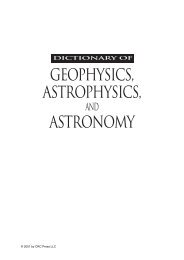tc dokuz eylül university institute of social sciences translation and ...
tc dokuz eylül university institute of social sciences translation and ...
tc dokuz eylül university institute of social sciences translation and ...
You also want an ePaper? Increase the reach of your titles
YUMPU automatically turns print PDFs into web optimized ePapers that Google loves.
culture to make changes <strong>and</strong> under what circumstances those changes may occur<br />
<strong>and</strong>/or be accepted (Toury, 1995; 63-64).<br />
Norms are not able to be observed directly, only the by-product <strong>of</strong> the norms.<br />
Even when studying <strong>translation</strong> directly can only a product be studied. The two<br />
major sources for studying <strong>translation</strong>al norms are textual <strong>and</strong> extra-textual.<br />
1. textual: the translated texts<br />
2. extra-textual: “theories” <strong>of</strong> <strong>translation</strong>, critical formulations, statements<br />
made by the translators, editors, publishers, e<strong>tc</strong>.<br />
Texts are primary products <strong>and</strong> are studied as an immediate representation <strong>of</strong><br />
norms whereas extra-textual material is simply a by-product <strong>of</strong> the activity <strong>of</strong> norms.<br />
The extra-textual material is <strong>of</strong>ten partial, biased <strong>and</strong> likely to lean toward<br />
propag<strong>and</strong>a <strong>and</strong> persuasion, so it should therefore be treated with circumspection.<br />
Despite this, however, extra-textual material is very useful in the study <strong>of</strong> norms in<br />
that it can provide a key into the analysis <strong>of</strong> the actual behavior (text).<br />
It should be understood that a translator’s behavior is never fully consistent.<br />
Her/his decision-making may change with different problem areas or even within one<br />
problem area in the same assignment. Consistency in <strong>translation</strong> lies somewhere in<br />
the middle between total r<strong>and</strong>omness <strong>and</strong> absolute regularity <strong>and</strong> can only be<br />
determined at the conclusion <strong>of</strong> studying the piece <strong>and</strong> not at the onset (Toury, 1995;<br />
65-66). Considering the norms summarized so far, it can be said that norms are<br />
effective factors while determining both the <strong>translation</strong> process <strong>and</strong> the <strong>translation</strong><br />
itself. So, Toury’s norms are used to describe, explain <strong>and</strong> predict, analyze <strong>and</strong><br />
criticize the <strong>translation</strong> phenomena.<br />
D. Norms in Polysystem<br />
Itamar Even-Zohar is the first name that comes to mind when polysystem<br />
theory is mentioned. Influenced by the Russian structuralists, he first put forward his<br />
approach in the 70's when he initially attempted to do something else. The term<br />
'polysystem' is not a r<strong>and</strong>omly selected concept, but implies the intent to make<br />
34
















